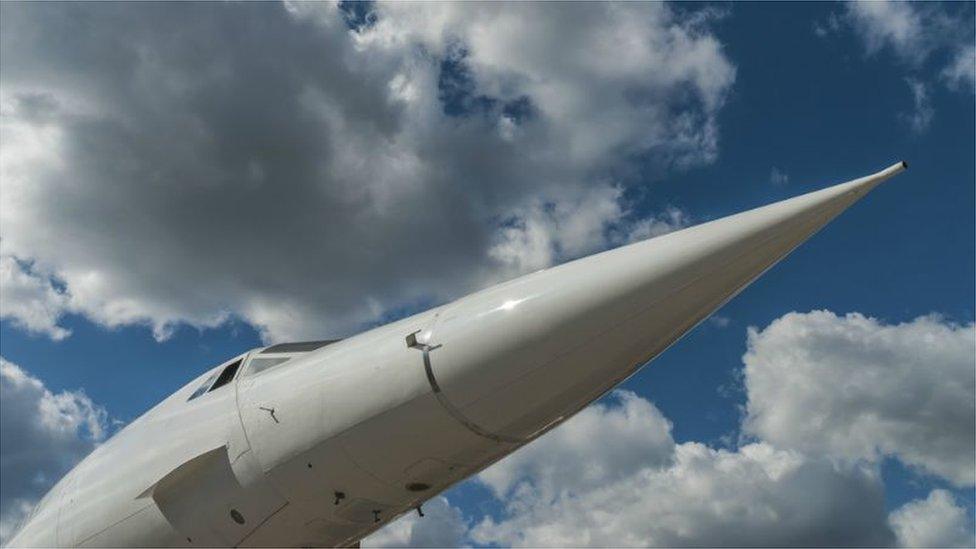Concorde remembered 20 years since final flight in Bristol
- Published
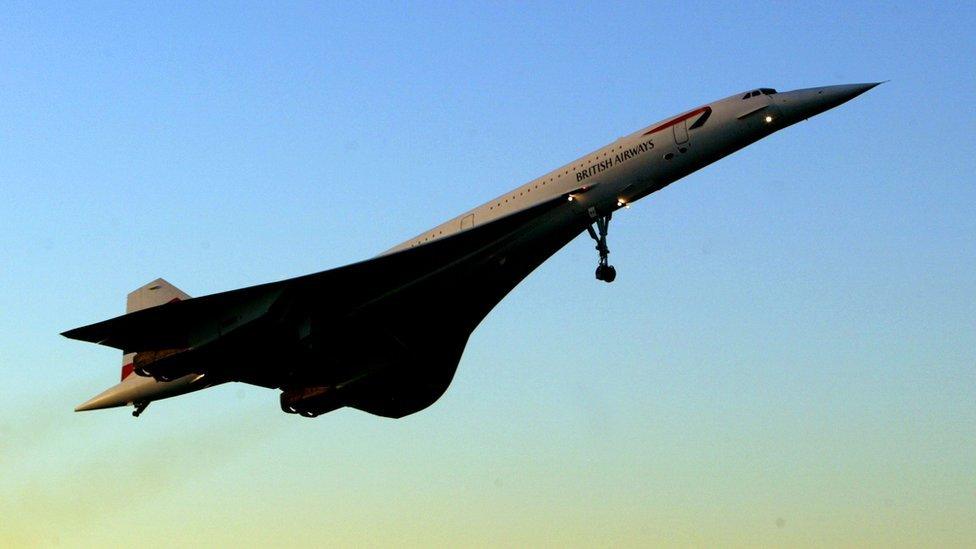
Air France and British Airways each had seven Concorde planes
It's been 20 years since the last iconic Concorde plane flew over Bristol's skies, returning to its home city.
Crowds gathered to watch the aircraft's piercing flight, with the plane's unmistakeable nose drooping as it came into land.
Concorde meant so much to so many people, the engineers and designers who worked to create a plane that could go supersonic, the captains and air stewards who spent countless hours on board and not to mention the thousands of passengers who drank sparkling champagne while soaring through the skies.
The aircraft's first commercial flight was on 21 January 1976 and its last was on 26 November 2003.
To mark the anniversary, the last ever plane to take flight will turn its nose up and down later in a specially-built hangar in Bristol.
One so-called nose droop had been due to take place at 11:30 GMT and another at 13:07 - the last moment it landed 20 years ago.
Special guests will then have a lunch to share their memories of the ground-breaking plane.
On 25 July 2000, Air France Flight 4590 crashed shortly after take-off with all 109 occupants and four on the ground killed. This was the only fatal incident involving Concorde.
Investigators later found one of the Concorde's tyres struck a small piece of sheet metal that had fallen from an aircraft that had taken off five minutes earlier.
Commercial operations never fully recovered from publicity after the crash, and concerns over pollution and ground noise contributed to the joint Franco-British decision to cease Concorde flights in 2003.
BBC West has gathered memories of the plane from captains, fans and engineers.
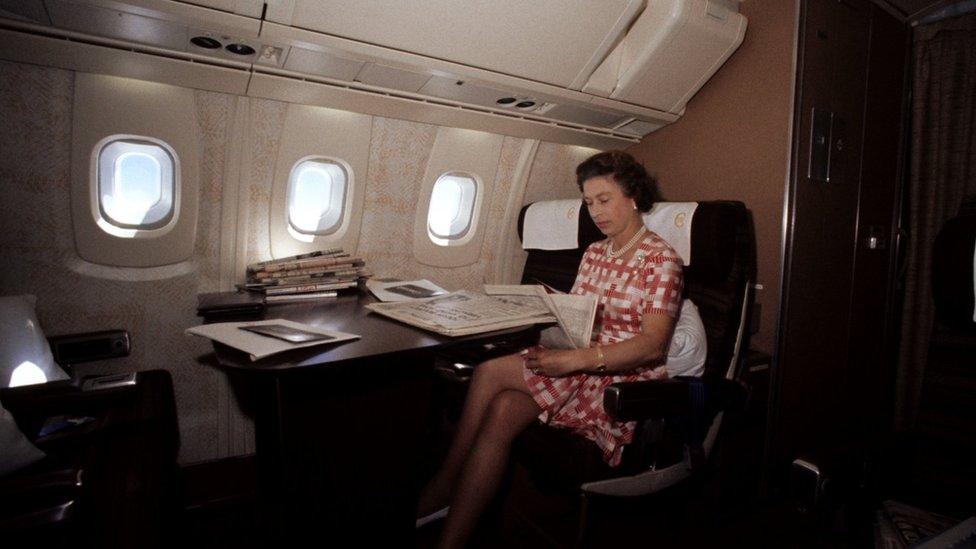
Queen Elizabeth II used Concorde to travel home from Barbados in 1977
Former chief engineer John Britton joined British Airways Concorde in 1963, going on to work as a designer on the Concorde engine.
"That's the engine which made Concorde feasible and able to fly at Mach 2," he said.
"It was brilliant to be a young engineer in my 20s working on such a prestigious project."
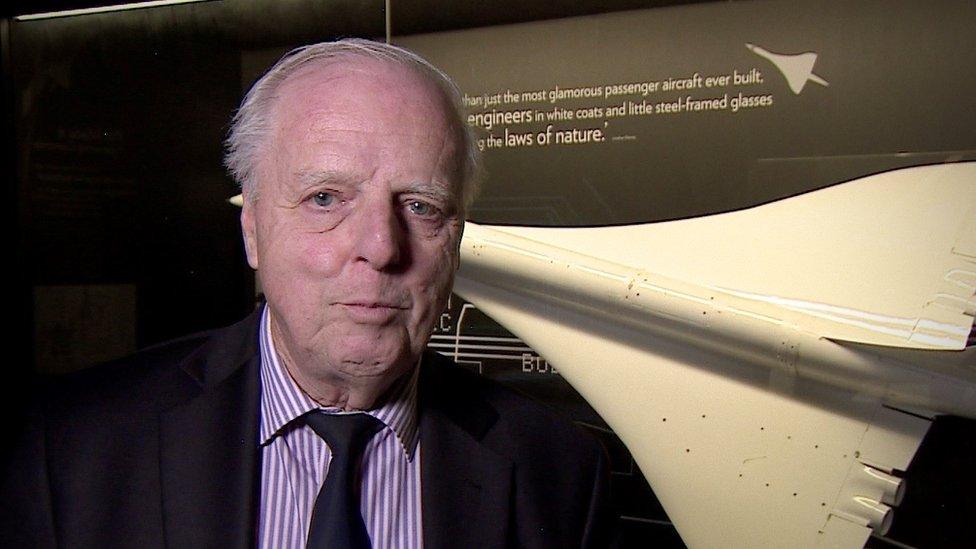
"We were absolutely pushing the boundaries of technology at that time, breaking new ground," said John Britton
Mr Britton said it was "funny" to think in the late 1960s there was only black and white television, yet they were designing an aircraft that was able to go twice the speed of sound [1,350mph].
'Fantastic experience'
He said: "In 1969 I had the privilege, we were all allowed out of the design office out on to the runway because Concorde had been doing some high-speed taxiing and it was thought that on this particular day it might take off.
"It went hurtling down the runway and we all held our breath and we all cheered and clapped and you could really feel the heat and the paraffin engines, you could actually feel it in your chest.
"That was a fantastic experience as a young engineer when that happened."
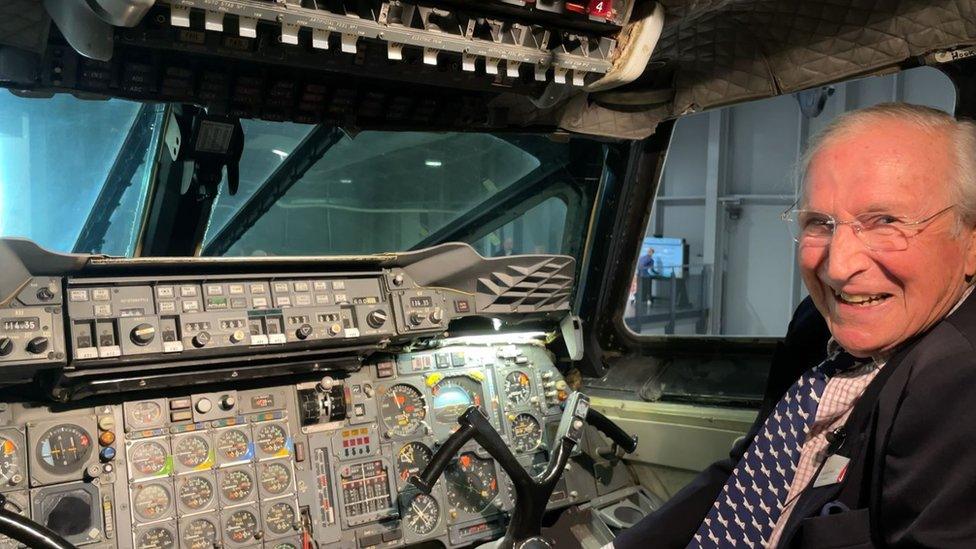
"Occasionally I get my memorabilia out to look at and just remind myself of how lucky I'd been," said Mr Morris
Colin Morris was a Concorde captain from 1977 to 1995 and said it was a "wonderful" time.
Mr Morris said: "When you line up on the runway at the controls of a Concorde, you've been allotted a specific task.
"And you open up those tabs and this aeroplane is like a spaniel on a lead and it's off like a rocket and you think 'oh, my god' I've got to keep up with this'."
He said going supersonic was "in the mind."
'Swig of champagne'
"The aeroplane is very good at going supersonic - you get on to the PA [public announcement] and you talk to the passengers about it and you say 'OK, we're just going to start our supersonic acceleration now' and there goes full power and you light up the afterburners two at a time and you feel two nudges in the back," he said.
He continued: "The passengers by that stage have had quite a lot of champagne so their senses are heightened and they all cheer and take another swig of their champagne."
The former captain said while the plane was viewed as just for the rich and the famous, "in fact every member of the public got a thrill out seeing it fly over".
"And they got a tremendous thrill out of it on the charter flights, which would take people all over the world just for the thrill of being on Concorde," he added.
"When I look back at my flying career the Concorde has just made it the most wonderful thing," added Mr Morris.
Neil Smith, was a member of the final crew that flew in the last Concorde.
He explained that Concorde coats were pre-boarded so they arrived on the plane first and it sometimes meant very extravagant and celebrity coats were tried on by staff.
Mr Smith said: "So there is a colleague who was casually examining a certain ex-president's wife coat, who then came on and said, 'it looks far better on me darling take it off'."
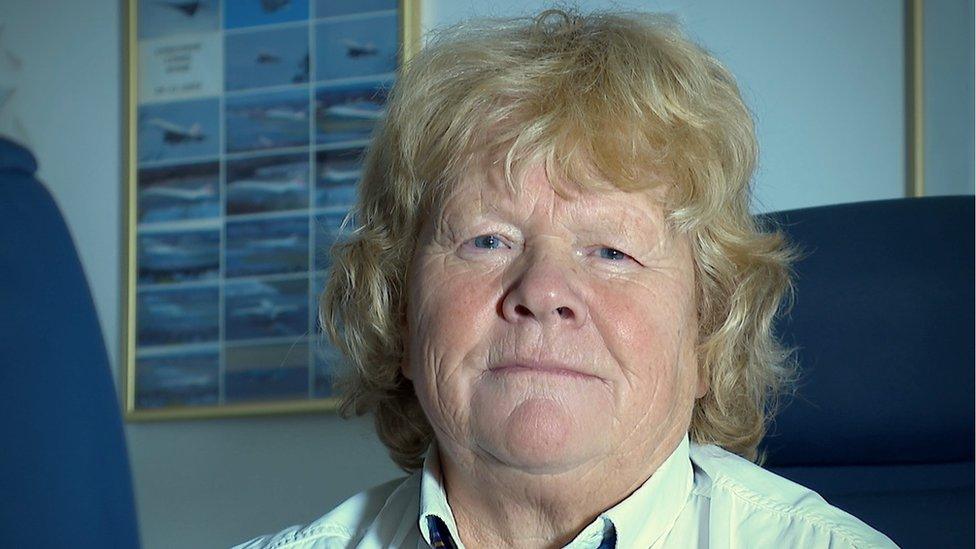
Rosie Thompson loved the "speed" and "effortless power" when she flew Concorde
Rosie Thompson has been a fan of Concorde her whole life and said flying on the plane was one of the "best experiences".
Ms Thompson said: "It was the speed, it was the effortless power, that took us across the Atlantic in three hours, 23 minutes."
She has now built up a collection of Concorde memorabilia including old menus, landing lights and plane models.
"As a little girl I would see this totally different-shaped aircraft in the sky never really believing that I would get to fly in it.
"When I did, it was just one of the best experiences I could ever hope to do in my life," she said.

Follow BBC West on Facebook, external, X, external and Instagram, external. Send your story ideas to: bristol@bbc.co.uk , external
Related topics
- Published31 October 2023
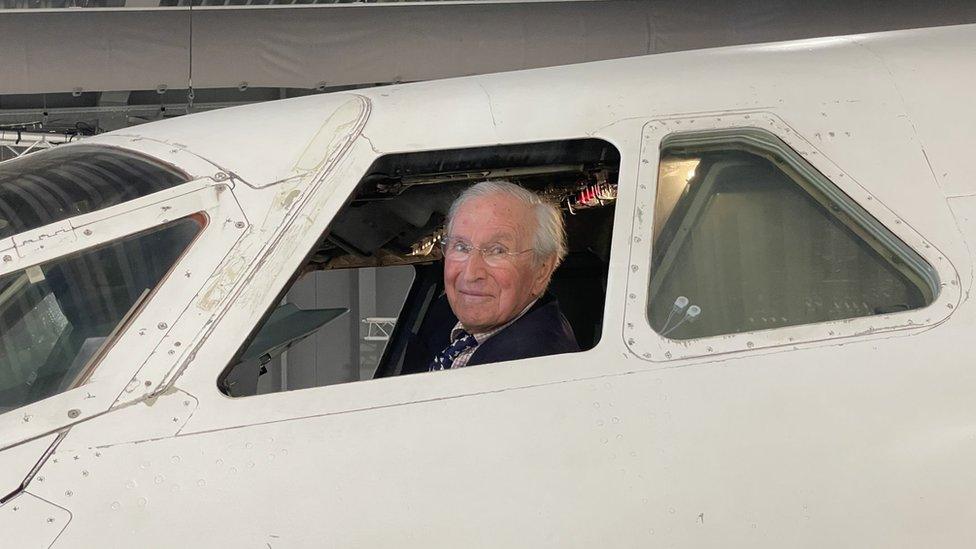
- Published16 June 2023

- Published28 January 2023
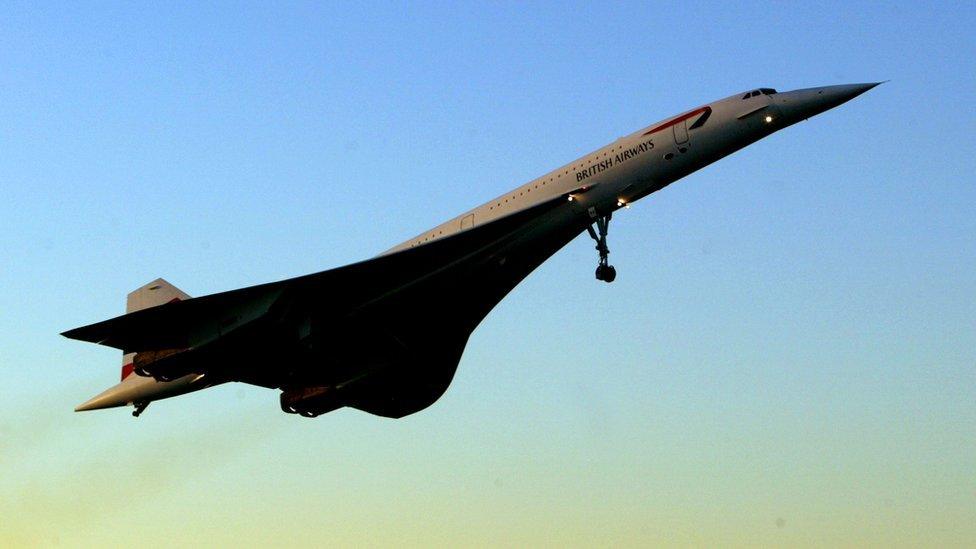
- Published5 June 2021
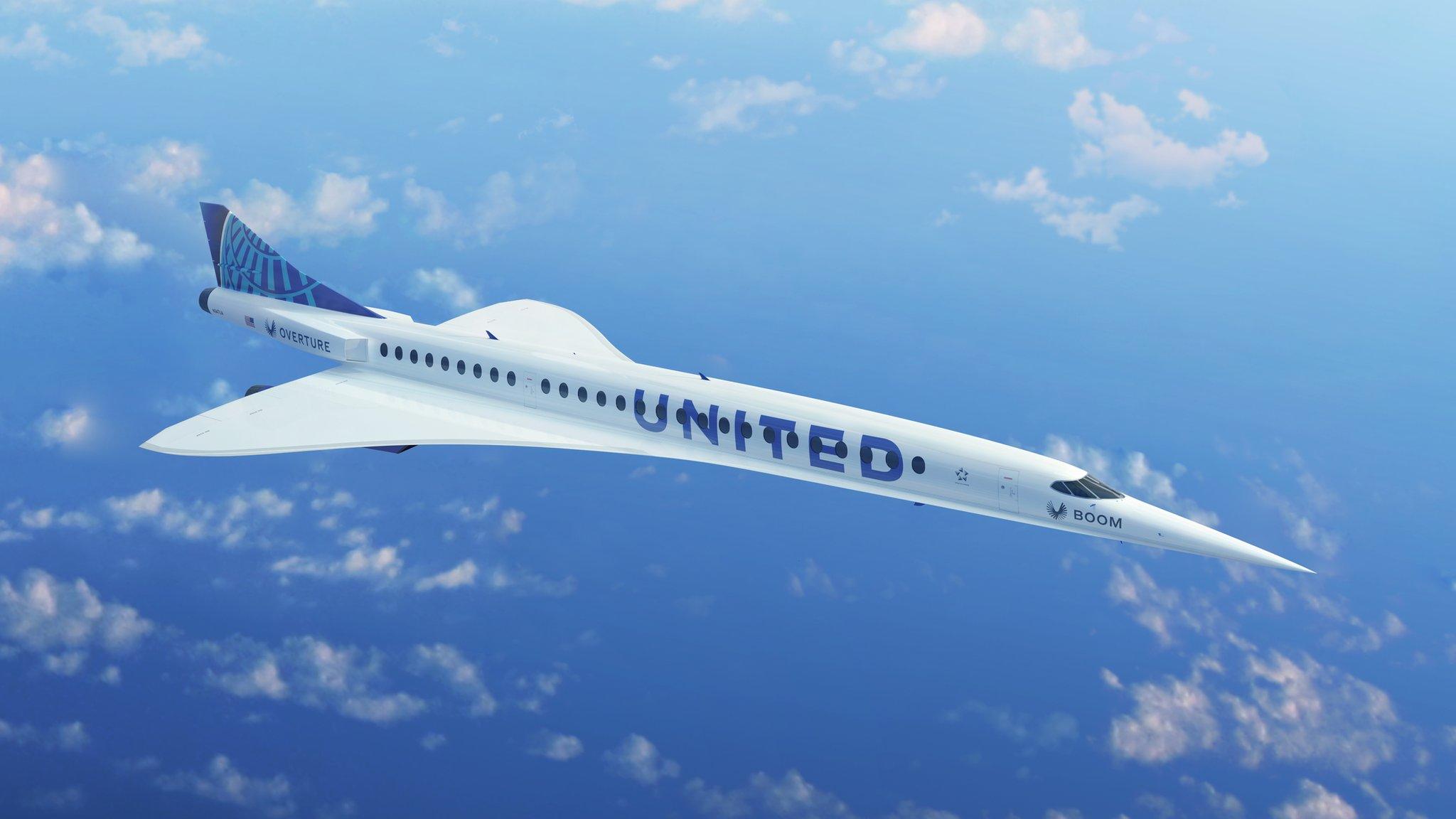
- Published1 March 2019

- Published9 April 2019
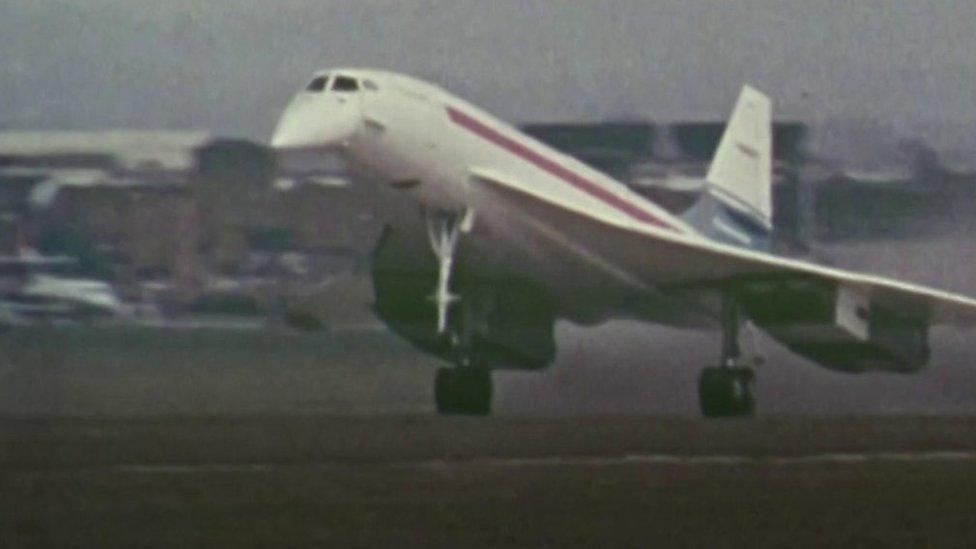
- Published10 April 2019
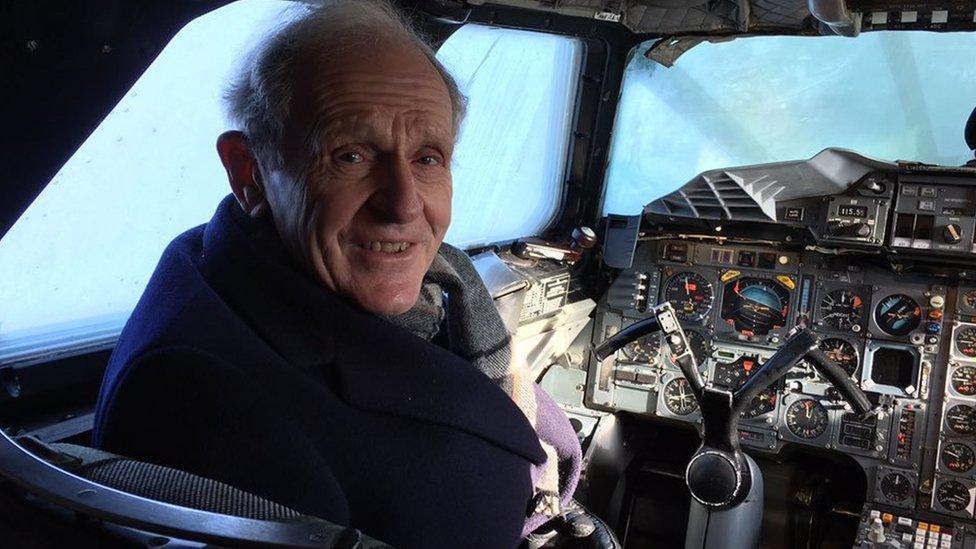
- Published5 February 2019
